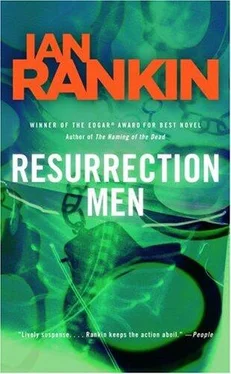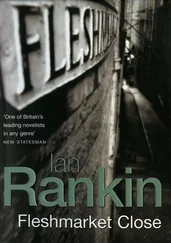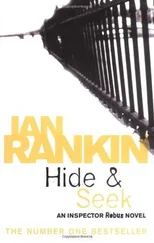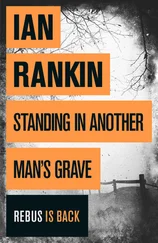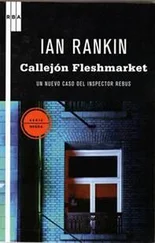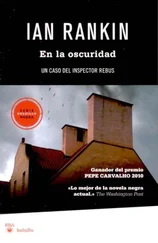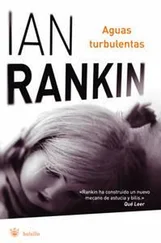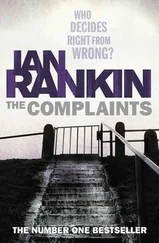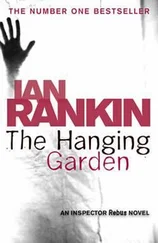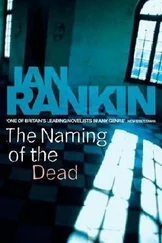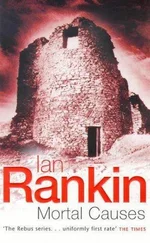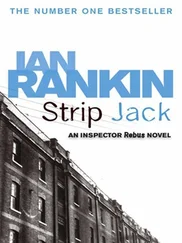“Depends what you mean.”
“I mean a stand-up fight?”
“You never knew him, did you? He couldn’t punch his way through a prawn cracker.”
Looking at the empty tinfoil cartons on the floor, Siobhan deduced that Neilson’s last meal had been Chinese.
“Did you hit him?” Hynds asked.
“I just gave him a bit of a push, that’s all. Eddie always liked to get up close, didn’t seem to know the meaning of personal space.”
“Where was this?” Siobhan asked.
“In the chest.”
“I mean, was it here?”
“At his gallery.”
“After he’d turned you down for the exhibition?”
“Yes.”
“And that’s all it was — a push?”
“He stumbled back, fell over some canvases.” Neilson shrugged.
“And you haven’t been back to the gallery since?”
“Wouldn’t wipe my arse on the place.”
“Really?” The question came from Hynds. Something about his tone of voice alerted the artist.
“Okay, I went there the night of the opening.”
“Did you go in?” Siobhan asked quietly.
“I’m assuming someone saw me, so you know damned fine I didn’t.”
“What were you doing there, Mr. Neilson?”
“The specter at the feast.”
“You wanted to taunt Mr. Marber?”
The artist ran a hand through his hair, further disturbing it. “I don’t know what I wanted exactly.”
“To make a scene?” Hynds suggested.
“If I’d wanted one of those, I’d have gone inside, wouldn’t I?”
“How long were you there?”
“Not long. Five, ten minutes.”
“Did you see anything?”
“I saw fat people pouring champagne down their throats.”
“I meant anything suspicious.”
Neilson shook his head.
“Did you recognize any of the guests?” Siobhan asked, shifting her weight from one foot to the other.
“A couple of journalists . . . a photographer . . . a few of Eddie’s buyers.”
“Such as?”
“Sharon Burns . . . It was galling to see her there. She’s bought a few of my paintings in the past . . .”
“Anyone else?”
“Morris Cafferty . . .”
“Cafferty?”
“The businessman.”
Siobhan nodded. “Does he own any of your own works?”
“I think he’s got one, yes.”
Hynds cleared his throat. “Did you happen to see any other artists?”
Neilson glowered at him, while Siobhan seethed that they’d gone off the subject of Cafferty. “Joe Drummond was there,” the artist admitted. “I didn’t see Celine Blacker, but no way she’d pass up free booze and the chance to be fawned over.”
“What about Hastie?”
“Hastie doesn’t do many parties.”
“Not even when he has paintings to sell?”
“He leaves that to the dealer.” Neilson’s eyes narrowed. “You like his stuff?”
“It has its moments,” Hynds offered.
Neilson shook his head slowly, as if in disbelief.
“Can I ask one more thing, Mr. Neilson?” Siobhan interrupted. “You’ve said that Edward Marber was a cheat. I’m not sure who he was cheating.”
“Bloody everyone. He’d sell a painting for full whack, then tell the artist he had to knock a bit off to secure the sale.”
“And how did that cheat the buyer?”
“Because they could probably have got it for the cheaper price. And take something like the New Colorists, that’s just bloody marketing hype. Means he can bump up his prices again.”
“No one has to buy if they don’t want to,” Hynds said.
“But they do buy, especially after Eddie’s patter’s done its trick.”
“You sell your own works direct, Mr. Neilson?” Siobhan asked.
“Dealers have got the market sewn up,” Neilson spat. “Bloodsucking bastards that they are . . .”
“So who represents you?”
“A London gallery: Terrance Whyte. Not that he seems to have what it takes . . .”
Outside, after another fifteen minutes of fairly unproductive grumbling from the artist, Siobhan and Hynds stepped onto the pavement. Siobhan’s car was curbside, Hynds double-parked alongside.
“He’s still talking about Marber in the present tense,” Siobhan commented.
Hynds nodded. “As if the murder hasn’t really affected him.”
“Or maybe he’s read the same psychology books we have, and knows it looks good for him.”
Hynds considered this. “He saw Cafferty,” he said.
“Yes, I wanted to thank you for getting us away from that particular topic so promptly.”
Hynds paused to think back, then muttered an apology. “Why are you so interested in Cafferty?”
She looked at him. “What do you mean?”
“I’ve heard about Cafferty and DI Rebus.”
“What about them, Davie?”
“Just that they . . .” Hynds seemed finally to realize that he was digging himself into a hole. “Nothing.”
“Nothing? You sure about that?”
He stared at her. “Why didn’t you take me with you to see Dominic Mann?”
She scratched at her ear, looking around before focusing on Hynds. “Know what his first question to me was? ‘Where’s your homophobic friend?’ That’s why I didn’t take you. I thought I might get more out of him if you weren’t there.” She paused. “And I did.”
“Fair enough,” Hynds said, his shoulders dropping, hands seeking the shelter of his pockets.
“What are Neilson’s paintings like, do you know?” Siobhan asked, keen to change the subject.
Hynds’s right hand appeared from its pocket, clutching four postcards. They were works by Malcolm Neilson. They had titles like First Impressions Count Last and Seeing How You Already Know. The titles didn’t go with the paintings: field and sky; a beach with cliff face; moorland; a boat on a loch.
“What do you think?” Hynds asked.
“I don’t know . . . I suppose I’d expected something a bit more . . .”
“Abstract and angry?”
She looked at him. “Exactly.”
“Abstract and angry don’t sell,” Hynds explained. “Not to the people who decide which prints and postcards they’ll foist on the public.”
“How do you mean?”
Hynds took the postcards and waved them at her. “These are where the big money is. Greeting cards, framed prints, wrapping paper . . . Ask Jack Vettriano.”
“I would if I knew who he was.” She was thinking: hadn’t Dominic Mann mentioned him . . . ?
“He’s a painter. The couple dancing on the beach.”
“I’ve seen that one.”
“I’ll bet you have. He probably makes more from card sales and the like than he does from his paintings.”
“You’re joking.”
But Hynds shook his head, pocketing the postcards. “Art’s all about marketing. I was speaking to a journalist about it.”
“One of the ones from the viewing?”
Hynds nodded. “She’s art critic for the Herald. ”
“And I wasn’t invited?” He looked at her, and she took the point: just like her and Dominic Mann. “Okay,” she said, “I asked for that. Go on about marketing.”
“You need to get artists’ names known. Plenty of ways to do that. The artist can cause a sensation of some kind.”
“Like whassername with her unmade bed?”
Hynds nodded. “Or you stir up interest in some new school or trend.”
“The New Scottish Colorists?”
“The timing couldn’t be better. There was a big retrospective last year of the original Colorists — Cadell, Peploe, Hunter and Fergusson.”
“You got all this from your art critic?”
He held up a single digit. “One phone call.”
“Speaking of which . . .” Siobhan dug into her pocket for her mobile, punched in a number and waited till it was answered. Hynds had taken the postcards out again and was flicking through them.
Читать дальше
